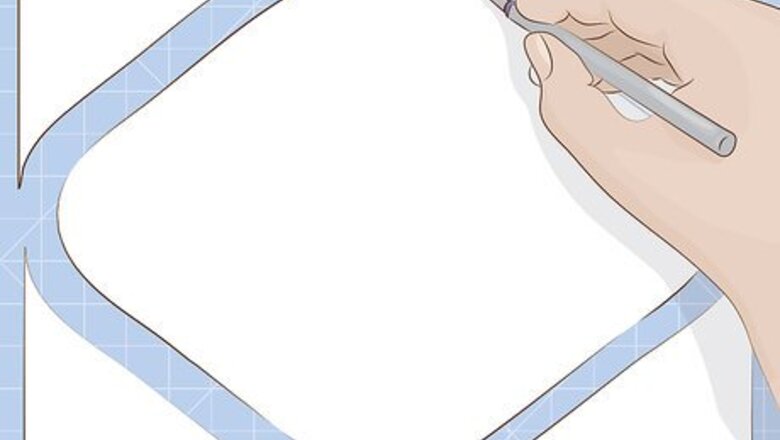
views
X
Research source
Creating the Pad Base

Create your template on a sheet of cardstock. Begin with a diamond shape that has rounded edges. It needs to be it about 9 inches (22.86 centimeters) high and 8 inches (20.32 centimeters) wide. Cut the template out when you are done. Make the top and bottom corners a little wider. They should be about 2½ inches (6.35 centimeters) wide.
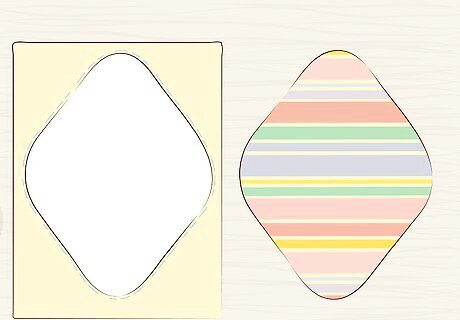
Use the template to cut two pieces out of cotton flannel. This will be the exterior of your cloth pad, so choose something that you like. You can use patterned fabric or a solid color. You can even use a pattern for one side, and a solid color for the other. You can also use cotton fabric instead of flannel. Check out the quilting and calico section of your local fabric store for lots of colorful options!
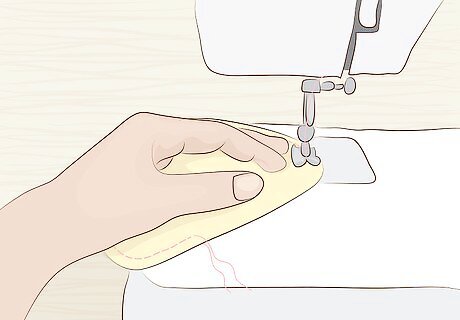
Sew the two pieces together with your chosen sides facing out. Pin the two pieces together first, with the right sides facing in. Sew around the piece using a ¼-inch (0.64-centimeter) seam allowance. You do not need to leave a gap for turning because you will be cutting a slit into it.
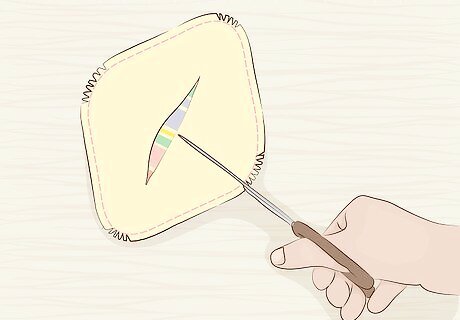
Cut a vertical slit in the middle of the piece. Make sure that you are only cutting through one layer of fabric, not both. Position the slit right in the middle. It only needs to be a few inches/centimeters tall. Consider cutting notches into the curved corners of the pad. This will help reduce bulk.
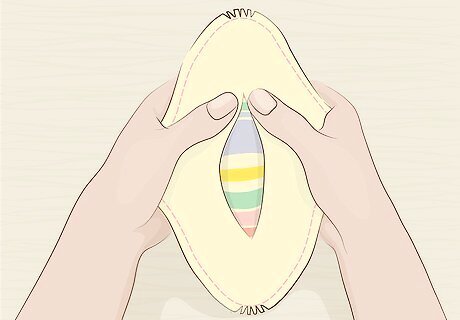
Turn the piece right-side out through the slit. Use your fingers to push the corners of the pad through the slit that you cut. If the edges/corners didn't turn out all, push them out with a pencil or knitting needle. Press the pad base with a hot iron using the cotton setting.
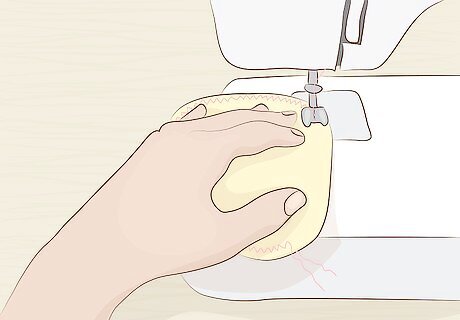
Topstitch around the top of the pad base. You can use a matching thread color or a contrasting one. You can even use a zigzag stitch to make it look more interesting. Backstitch at the start and end of your sewing, then trim the excess threads of as close to the fabric as you can.
Creating the Pad Liner
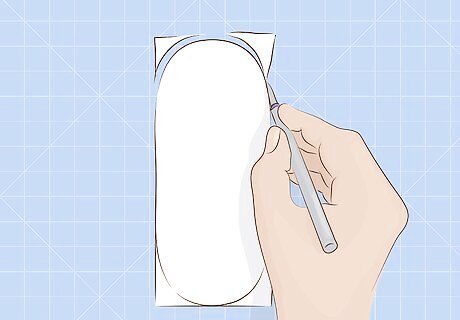
Create your template on another sheet of cardstock. Begin with a vertical rectangle that has a rounded top and bottom. Make the rectangle about 8 inches (20.32 centimeters) high, and 2½ inches (6.5 centimeters) wide. Cut the template out when you are done.
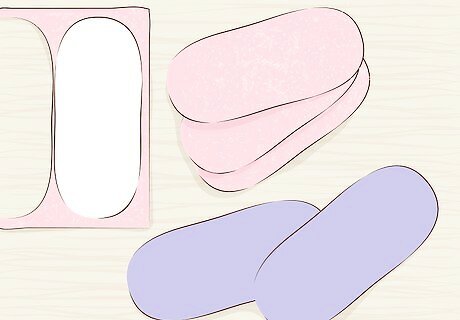
Use the template to trace the liner pieces. You will need 3 to 4 pieces of soft toweling. Use the template to trace two more pieces out of flannel; this time, add a ¼-inch (0.64-centimeter) seam allowance. The toweling will make the liner. The flannel will make the liner cover. Match the flannel to the base pad.
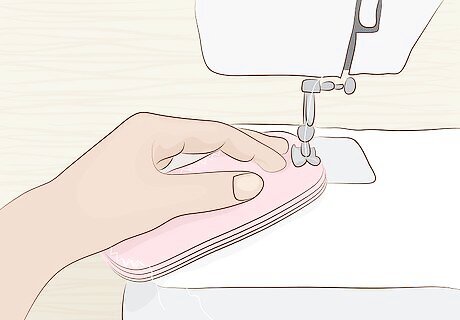
Stack and sew the toweling pieces together. Use a ⅛ to ¼-inch (0.32 to 0.64-centimeter) seam allowance. Go around the edge of the piece using a zigzag stitch. Set the stack aside when you are done. Do not include the two flannel pieces in this stack. The color of the thread does not matter. You will be putting this inside the liner cover.
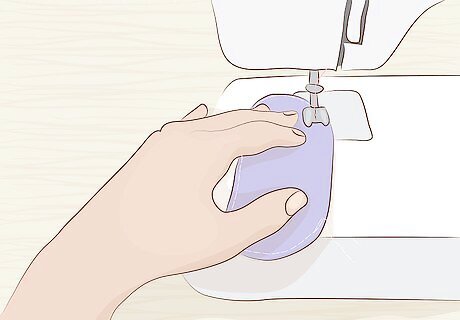
Sew the flannel pieces together to make the liner cover. Pin the flannel pieces together with the right sides facing in. Sew around them using a ¼-inch (0.64-centimeter) seam allowance. Do not leave a gap for turning. You will be cutting a slit into the piece instead.
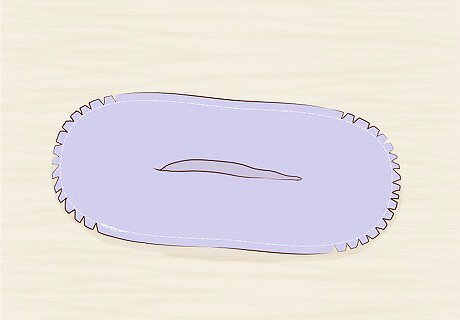
Cut a vertical slit into the liner cover, then turn it right-side-out. Use the same technique as you did for the pad base. This time, make the slit about 4 inches (10.16 centimeters) tall. This will give you enough space to tuck the towel lining instead. Cut notches into curved edges of the pad. This will help reduce bulk.

Tuck the towel liner into the flannel liner. Simply slip the towel liner through the slit, and into the flannel cover. Smooth out any bumps or buckles.
Putting Everything Together
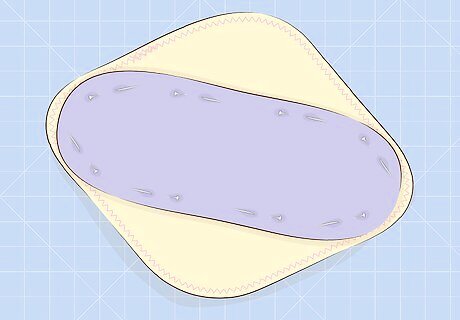
Pin the pad liner on top of the pad base. Turn the pad base so that the longer axis is vertical, and the side with the slit is facing up. Place the pad liner on top, with the slit facing down. Make sure that it is centered and oriented vertically. Pin everything together when you are done.
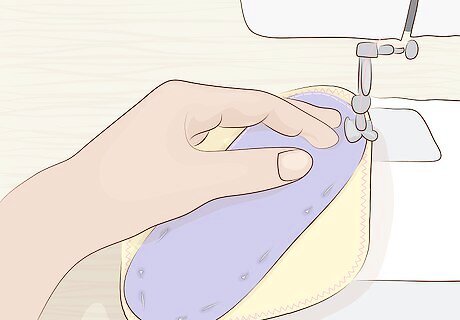
Topstitch around the liner to secure it to the pad base. Sew around the pad liner, using a ⅛ to ¼-inch (0.32 to 0.64-centimeter) seam allowance. Backstitch at the start and end of your sewing, then snip the thread as close to the material as you can. Remove the pins as you sew. You can use a matching or contrasting thread color for this.
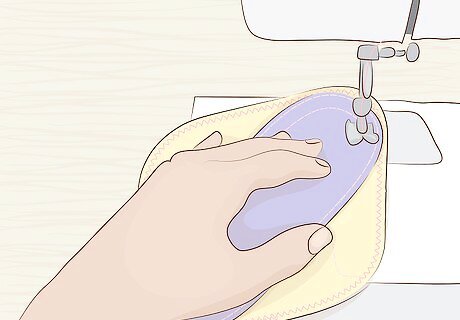
Sew another ½ inch (1.27 centimeters) inside the liner. Make sure that you are sewing ½ inch (1.27 centimeters) away from the topstitch and not the edge of the liner. Use the same thread color as you did before. This will help secure the liner further to the base and prevent buckling.
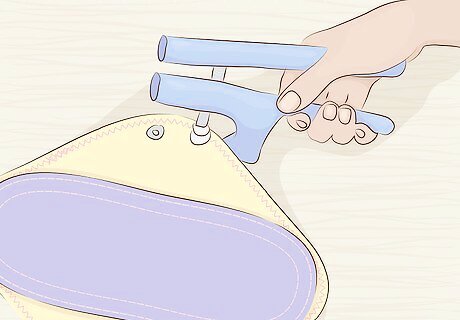
Add some snaps or Velcro to the wings. You can use sew-on snaps or the kind that you have to set with a tool. You can also use Velcro instead. Avoid using self-adhesive Velcro, however. While it is convenient to apply, it does not last very long, and it will eventually come off. The wings will close on the outside of your underwear, so plan accordingly.
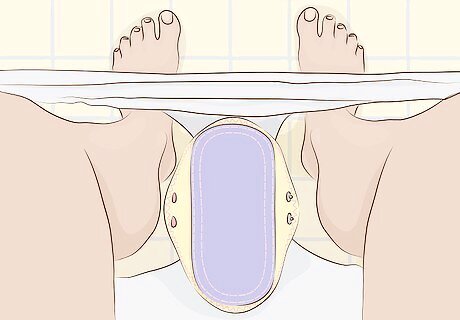
Use the liner. Place the pad base flannel-side-down onto the seat of your underwear; make sure that the liner pad is facing up. Fold the wings under the seat of your underwear, then close the snaps. Depending on your flow, the liner should last 2 to 4 hours.
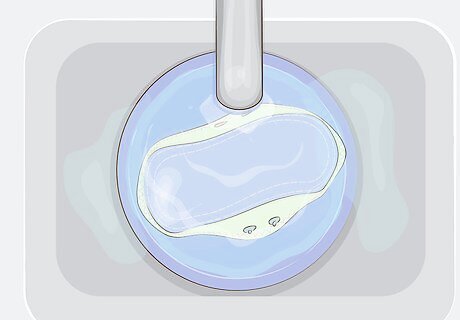
Wash the liner properly. Store the pad in a dry bag until you get home. Rinse it promptly with cold water, then wash it with hot water and detergent. Finish off with a final cold rinse, then dry them in the dryer.




















Comments
0 comment